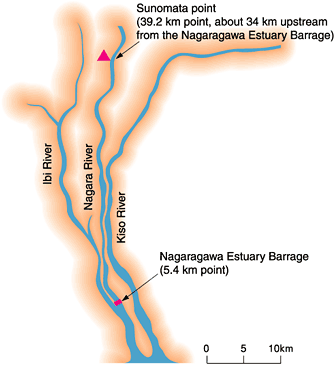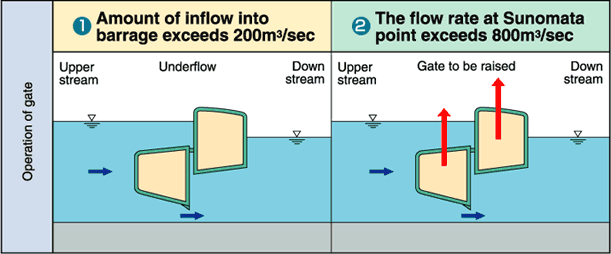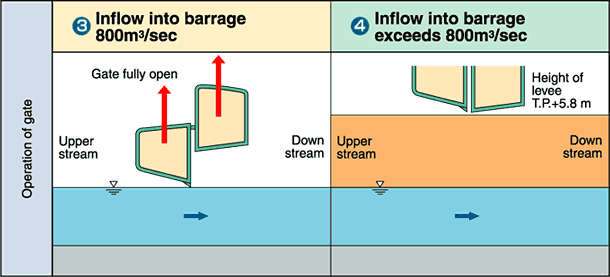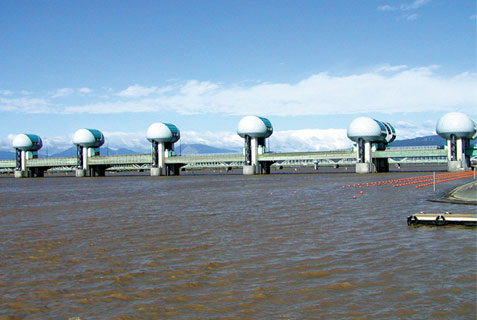Operation During Flood

When the river is flooded, all of the gates (10 adjustment gates, lock gates and lock -type fishway gates) are raised to a level higher than the top of levee height. The gates therefore do not prevent the flood from flowing down.
Until the inflow rate to the barrage reaches 200 m3/sec, the gates are operated basically to let the water flow over them. When the inflow rate exceeds 200 m3/sec and is expected to increase further, the adjustment gates are operated to let the water flow under them to prepare for full opening in the flood conditions (![]() ).
).
The gates are fully opened in flood conditions when the flow rate at Sunomata, an upstream observation site, reaches 800 m3/sec (![]() ). The Sunomata site is about 34 km from the barrage, and it takes more than 2 hours for the flood to reach the barrage. Accordingly, it is possible to raise the gates without fail during this period.
). The Sunomata site is about 34 km from the barrage, and it takes more than 2 hours for the flood to reach the barrage. Accordingly, it is possible to raise the gates without fail during this period.

The operation should be carried out without causing abrupt changes in the water levels upstream and downstream of the barrage.
When the inflow rate into the barrage exceeds 800 m3/sec, all the gates are opened to the full extent (![]() ), and the lower ends of the gates are kept above the barrage height (T.P. +5.8 m) (
), and the lower ends of the gates are kept above the barrage height (T.P. +5.8 m) (![]() ). Even when the gates are fully opened, the strength of the river flow is so high that saltwater is forced downstream and no brine is allowed to intrude upstream of the barrage.
). Even when the gates are fully opened, the strength of the river flow is so high that saltwater is forced downstream and no brine is allowed to intrude upstream of the barrage.

Since the river bed has been dredged during a flood, the water level in the downstream section of the Nagara remains lower than before, markedly enhancing the safety against the flood. There is only a very little afflux from the barrage columns remaining in the river, offering no obstacle to the flood. As the barrage columns are 45 m apart, driftwood, etc. is not caught by them.
By the end of fiscal 2005, the gates have been fully opened for flood control 73 times since they went into service.

Floodwater running downstream as viewed from downstream of the barrage
(during Typhoon No. 23 around 1:00 p.m. on October 21, 2004)